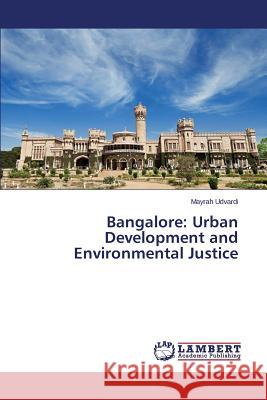Bangalore: Urban Development and Environmental Justice » książka
Bangalore: Urban Development and Environmental Justice
ISBN-13: 9783659666490 / Angielski / Miękka / 2015 / 172 str.
This work bridges the transnational discourses on environmental justice and urban social inequality through an in depth analysis of Bangalore, India. I define environmental justice as the meaningful participation in the development of the environment and the fair access to that environment across peoples regardless of difference. Although gaining traction in other global cities, environmental justice has not been considered in Indian cities because the conceptualization of the "environment" is pragmatically restricted to rural areas. I ground this work in three core arguments: (1) the natural environment and built environment exist in a hybrid form in both cities and rural areas; (2) by ascribing agency to both the natural and the built components of hybrid environments, it is possible to qualify their nexus as it impacts the human experience; (3) problems that are commonly understood as social injustices are shaped by this natural-built environment (NBE) nexus, and must therefore be reconstructed as environmental injustices. By studying Bangalore's development using the NBE nexus framework, I am able to understand the city's dichotomies on a deeper level, as inextricably link"
This work bridges the transnational discourses on environmental justice and urban social inequality through an in depth analysis of Bangalore, India. I define environmental justice as the meaningful participation in the development of the environment and the fair access to that environment across peoples regardless of difference. Although gaining traction in other global cities, environmental justice has not been considered in Indian cities because the conceptualization of the "environment" is pragmatically restricted to rural areas. I ground this work in three core arguments: (1) the natural environment and built environment exist in a hybrid form in both cities and rural areas; (2) by ascribing agency to both the natural and the built components of hybrid environments, it is possible to qualify their nexus as it impacts the human experience; (3) problems that are commonly understood as social injustices are shaped by this natural-built environment (NBE) nexus, and must therefore be reconstructed as environmental injustices. By studying Bangalores development using the NBE nexus framework, I am able to understand the citys dichotomies on a deeper level, as inextricably link











